Order Passeriformes Genus Terpsiphone Higher classification Paradise flycatcher | Phylum Chordata Family Monarchidae Scientific name Terpsiphone atrocaudata Rank Species | |
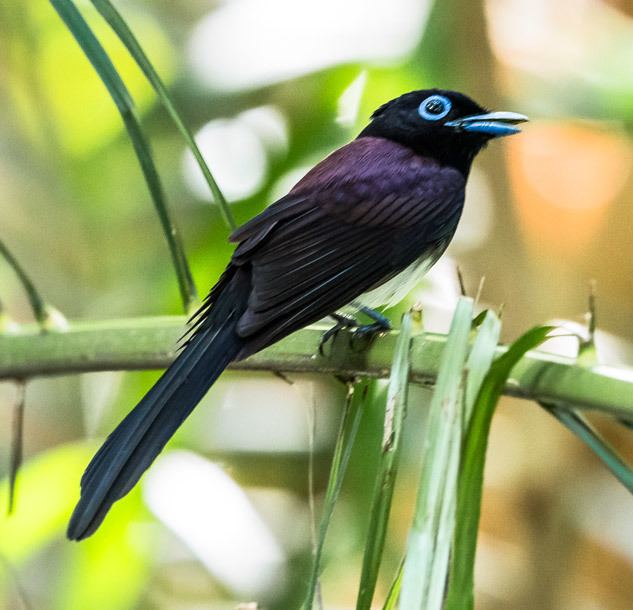 | ||
Similar Bird, Paradise flycatcher, Narcissus flycatcher, Blue‑and‑white flycatcher, Indian paradise flycatcher | ||
Japanese paradise flycatcher
The Japanese paradise flycatcher (Terpsiphone atrocaudata), also called the black paradise flycatcher, is a medium-sized passerine bird native to southeastern Asia. It is a glossy black, chestnut and white bird, slightly smaller than either the Amur paradise flycatcher or Oriental paradise flycatcher, but similar in appearance. Males have exceptionally long tails. Females are generally duller in appearance and have shorter tails.
Contents
- Japanese paradise flycatcher
- Taxonomy and systematics
- Subspecies
- Description
- Distribution and habitat
- References
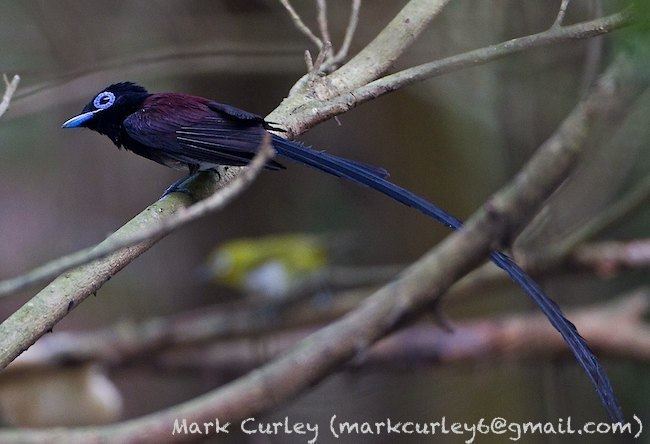
It is a migratory species, breeding in Japan, South Korea, Taiwan and the far north of the Philippines. Outside the breeding season it migrates to China, Thailand, Laos, Vietnam, other parts of the Philippines, Malaysia, Singapore, and Sumatra, Indonesia.
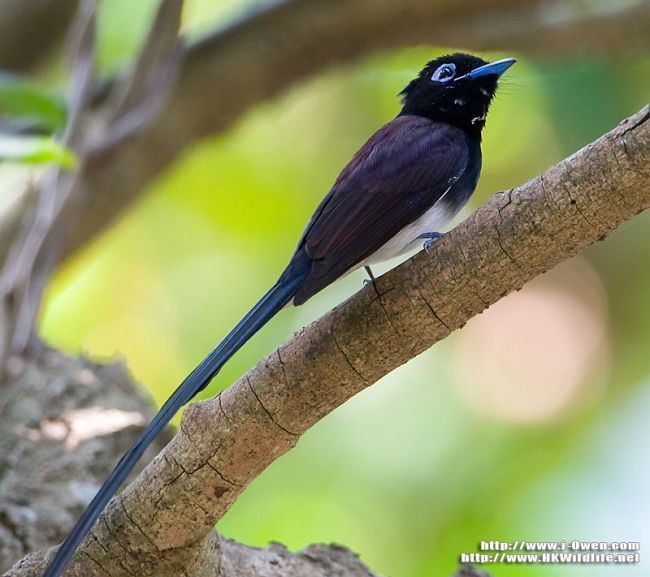
Japanese paradise flycatcher
Taxonomy and systematics
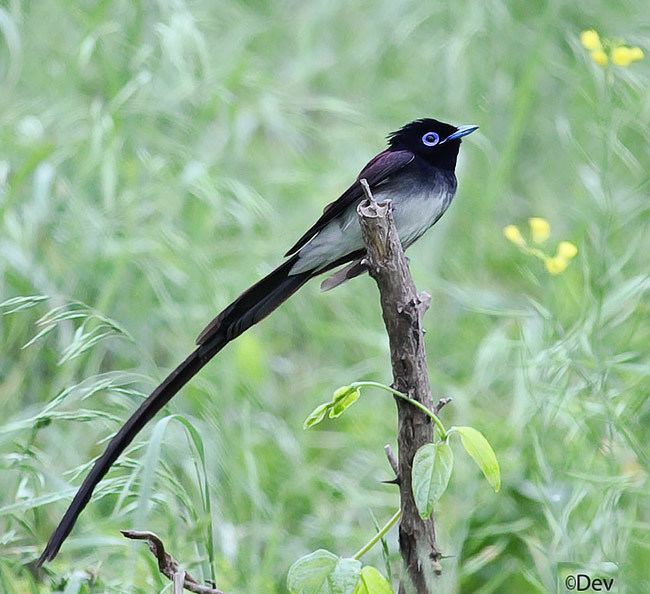
The Japanese paradise flycatcher was previously classified with the Old World flycatcher family Muscicapidae, but the paradise-flycatchers, monarch flycatchers and Australasian fantails are now normally grouped with the drongos in the family Dicruridae, which has most of its members in Australasia and tropical southern Asia.
Subspecies
Three subspecies are recognized:
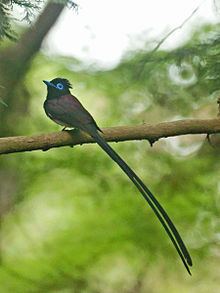
Description

The Japanese paradise flycatcher is similar in appearance to both the Amur paradise flycatcher and the Oriental paradise flycatcher, but is slightly smaller. Mature males have a black hood with a purplish-blue gloss which shades into blackish-grey on the chest. The underparts are off-white to white. The mantle, back, wings and rump are plain dark chestnut. The tail has extremely long black central feathers, which are shorter in immature males. Unlike the Asian paradise flycatcher there is no white morph. The female resembles the male but is duller and darker brown on the chestnut areas. It has black legs and feet, a large black eye with a blue eye-ring, and a short blue bill.
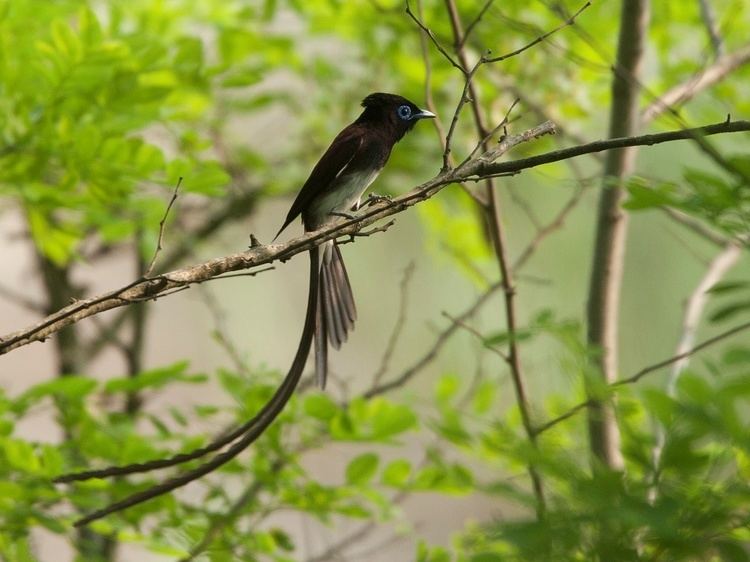
The song is rendered in Japanese as tsuki-hi-hoshi, hoi-hoi-hoi, which translates to Moon-Sun-Stars and gives the Japanese name of the bird サンコウチョウ (三光鳥) sankōchō (literally, bird of three lights, i.e. moon, sun, star, from san three + kō lights + chō bird).
Distribution and habitat
The Japanese paradise flycatcher is mainly migratory and breeds in shady mature deciduous or evergreen broadleaf forest of Japan (southern Honshū, Shikoku, Kyushu and the Nansei Shoto islands), South Korea, Taiwan (including Lanyu island) and the far north Philippines. It is a non-breeding visitor to mainland China, Hong Kong, Thailand, Laos, Vietnam, Philippines, Malaysia, Singapore, and Sumatra, Indonesia.
In Jeju-do of South Korea, Gotjawal Forest, a forest formed on a rocky area of volcanic AA Lava, is one of the important breeding sites of Japanese paradise flycatcher
A recent survey detected a steep decline in part of the Japanese breeding population which has presumably occurred because of forest loss and degradation in its winter range.
